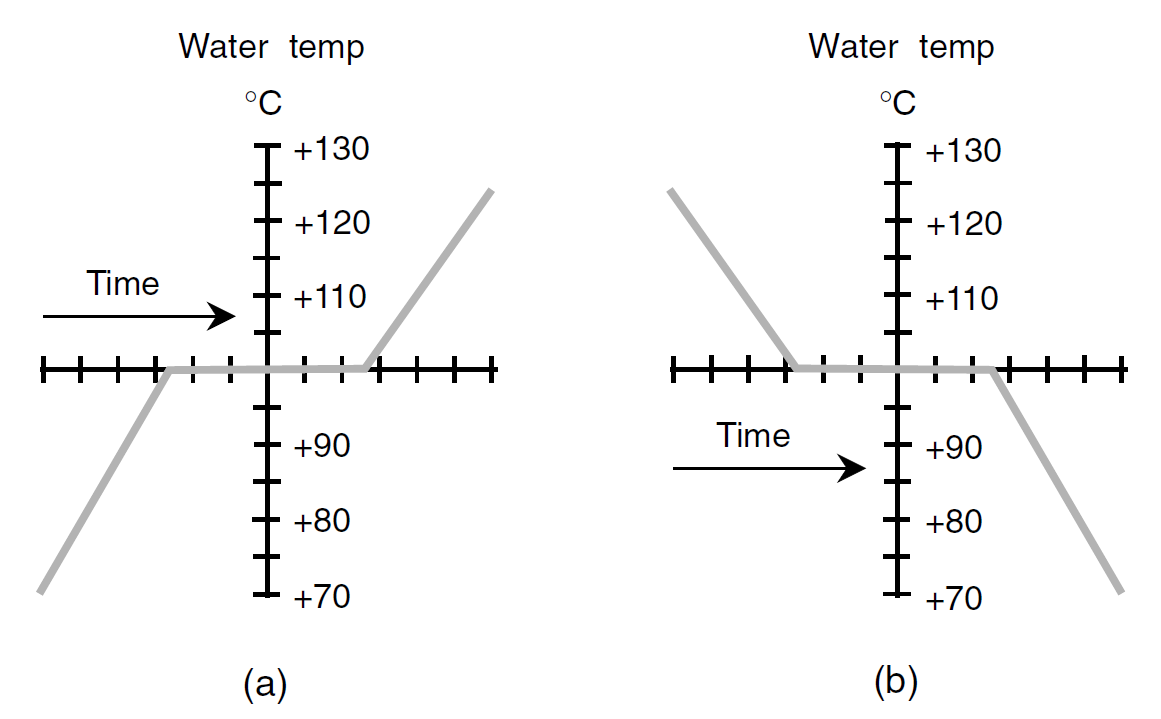


 الفيزياء الكلاسيكية
الفيزياء الكلاسيكية
 الكهربائية والمغناطيسية
الكهربائية والمغناطيسية
 علم البصريات
علم البصريات
 الفيزياء الحديثة
الفيزياء الحديثة
 النظرية النسبية
النظرية النسبية
 الفيزياء النووية
الفيزياء النووية
 فيزياء الحالة الصلبة
فيزياء الحالة الصلبة
 الليزر
الليزر
 علم الفلك
علم الفلك
 المجموعة الشمسية
المجموعة الشمسية
 الطاقة البديلة
الطاقة البديلة
 الفيزياء والعلوم الأخرى
الفيزياء والعلوم الأخرى
 مواضيع عامة في الفيزياء
مواضيع عامة في الفيزياء|
Read More
Date: 9-12-2020
Date: 30-12-2016
Date: 6-12-2020
|
BOILING AND CONDENSING
Let’s return to the stove, where a kettle of water is heating up. The temperature of the water is exactly +100°C, but it has not yet begun to boil. As heat is continually applied, boiling begins. The water becomes proportionately more vapor and less liquid. However, the temperature remains at +100°C. Eventually, all the liquid has boiled away, and only vapor is left. Imagine that we have captured all this vapor in an enclosure, and in the process of the water’s boiling away, all the air has been driven out of the enclosure and replaced by water vapor. The stove burner, an electric type, keeps on heating the water even after all of it has boiled into vapor.
At the moment when the last of the liquid vanishes, the temperature of the vapor is +100°C. Once all the liquid is gone, the vapor can become hotter than +100°C. The ultimate extent to which the vapor can be heated depends on how powerful the burner is and on how well insulated the enclosure is.
Consider now what happens if we take the enclosure, along with the kettle, off the stove and put it into a refrigerator. The environment, and the water vapor, begins to grow colder. The vapor temperature eventually drops to +100°C. It begins to condense. The temperature of this liquid water is +100°C. Condensation takes place until all the vapor has condensed. (But hardly any of it will condense back in the kettle. What a mess!) We allow a bit of air into the chamber near the end of this experiment to maintain a reasonable pressure inside. The chamber keeps growing colder; once all the vapor has condensed, the temperature of the liquid begins to fall below +100°C.
As is the case with melting and freezing, the temperature of water does not follow exactly along with the air temperature when heating or cooling takes place in the vicinity of +100°C. Instead, the water temperature follows a curve something like that shown in Fig. 1. In part a, the air temperature

Fig. 1. Water as it boils and condenses. (a) The environmental temperature is getting warmer, and the liquid water is boiling. (b) The environmental temperature is getting colder, and the water vapor is condensing.
is getting warmer; in part b, it is getting colder. The water temperature “stalls” as it boils or condenses. Other substances exhibit this same property when they boil or condense.



|
|
|
|
للعاملين في الليل.. حيلة صحية تجنبكم خطر هذا النوع من العمل
|
|
|
|
|
|
|
"ناسا" تحتفي برائد الفضاء السوفياتي يوري غاغارين
|
|
|
|
|
|
|
نحو شراكة وطنية متكاملة.. الأمين العام للعتبة الحسينية يبحث مع وكيل وزارة الخارجية آفاق التعاون المؤسسي
|
|
|